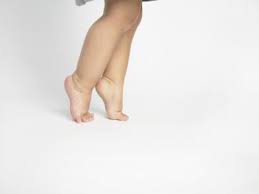Ask The Therapists
By Kelsie Noel, DPT & Brittany deRoche, PT, DPT
Kids Place Pediatric Physical Therapists
Q: My child is walking on her toe, should I receive therapy?
The concern is not whether you child is toe walking, but whether your child toe walks more than 50% of the time. 
Toe walking is a pathological movement disorder notably characterized by walking on toes instead of a typical heel-to-toe gait pattern. Toe walking can cause various orthopedic complications if untreated for a long duration of time including: calf tightness, ankle or foot pain, knee pain, and increased toe spread (toe box). Beyond these orthopedic concerns, toe walking also causes muscle strength imbalances, decreased coordination, and impairments in balance.
Toe walking is often defined as idiopathic or with unknown cause. However, there are many contributing factors to why someone walks on their toes including sensory seeking/avoiding, vestibular issues, visual spatial concerns, and muscle weakness/instability.
Sensory
Children may toe walk to avoid sensory input or to seek additional sensory input. This may be a contributing factor for your child if they do not like having their feet touched or has difficulty walking on different textures (floor tile, grass, sand, carpet, etc.). Your child may enjoy jumping excessively and enjoy movement more than other peers.
Vestibular
Children may toe walk due to their impaired awareness of where their body is in space, creating their perception of “normal” to be on their toes instead of flat on their feet. Your child may complain of being carsick easily, having frequent nausea, or having other recurrent tummy issues. They may also love spinning more than their peers.
Vision
Children may toe walk due to their visual perception of normal being shifted so that they are on their toes versus typical walking. Their vision may be 20/20 but what is altered is the way they are interpreting what they see. This can be screened in the clinic and given a referral if there are additional concerns.
Instability
Children often exhibit weak muscles specifically of their core, hips, and feet. This may result in compensatory movement strategies, including toe walking.
New research in toe walking looks at addressing toe walking at multiple angles. Assessment of the causes of toe walking allows sensory or visual causes to be treated and addressed. Soft tissue massages address any muscular and fascia restrictions. New orthotic research has been developed to work on retraining the gait pattern while assisting in tight muscle elongation through a walking program instead of all day use of an orthotic.
When you have your child evaluated by a pediatric physical therapist, they will assess all of these components and assist you in finding the appropriate resources to meet your child’s needs. Practice makes permanent, and earlier treatment will lead to a faster recovery. As your child continues to grow and develop, bone deformities become more difficult to treat.






